Butterfly Life Cycle Project
As the days start to get longer and warmer, spring is a great time for preschoolers to explore the fascinating life cycle of butterflies.
Our sensory bin provides a fun butterfly life cycle project designed to help preschoolers gain an understanding of the amazing transformation process.
This interactive butterfly activity for preschoolers not only provides many educational benefits but also encourages creativity and exploration in young learners as they observe and interact with the different materials.
Sensory bins are an excellent way for students to learn about science topics in enjoyable ways while they build skills that will help them succeed later on.
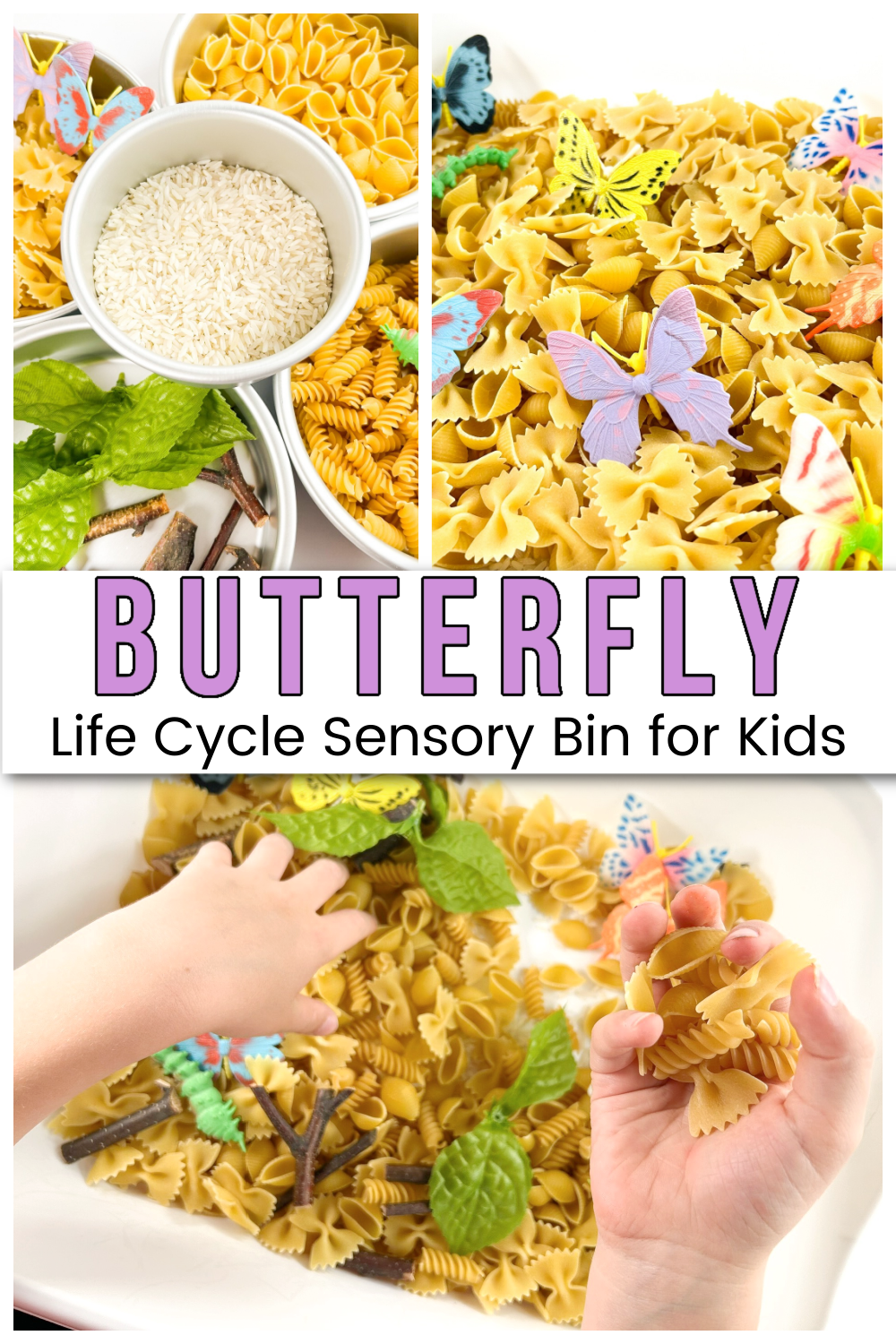
This fun sensory bin is a hands-on activity that encourages preschool and kindergarten students to explore the different stages of a butterfly’s life cycle using their senses.
This fun and interactive project not only promotes scientific learning but also helps develop fine motor skills and encourages creativity.
Sensory Bins in the Classroom
A sensory bin is a hands-on learning activity that engages the senses of young learners by providing a contained space filled with various materials that can be manipulated through touch, sight, sound, and sometimes even smell.
Sensory bins can be used in the classroom to promote a range of learning objectives across different subjects, including science, literacy, math, and social-emotional development.
Sensory bins stimulate creativity, promote problem-solving and critical thinking, and help develop cognitive and fine motor skills.
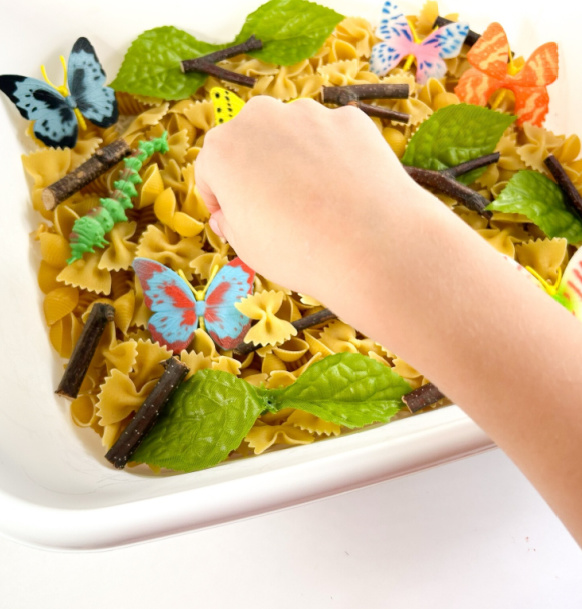
Using a Sensory Bin to Teach About Butterflies
Using a sensory bin to teach about butterflies has many benefits for young learners. Firstly, it provides a hands-on experience that uses multiple senses to promote sensory processing and memory retention.
By allowing students to manipulate and explore different sensory materials that represent various stages of the butterfly life cycle, such as rice for eggs or pipe cleaners for antennae, they can learn through play and exploration.
Sensory bins can be used to differentiate instruction, as students can work at their own pace and with materials that match their learning style.
Lastly, a butterfly-themed sensory bin can be a useful tool for building vocabulary, as students can be encouraged to describe and discuss the sensory materials in detail.
Butterfly Life Cycle Project
Using a butterfly sensory bin can make learning about the metamorphosis process of butterflies a memorable and enjoyable experience for students.
What You’ll Need
- sensory bin
- white rice
- pasta – rotini, shells, bow tie
- butterfly toys
- caterpillar toys
- fake leaves
- small sticks
Creating the Sensory Bin
To prepare the butterfly sensory bin for your little ones, fill your bin with rice and pasta. The rice represents rice. The rotini represents caterpillars, the shells represent the chrysalis, and the bow ties represent butterflies.
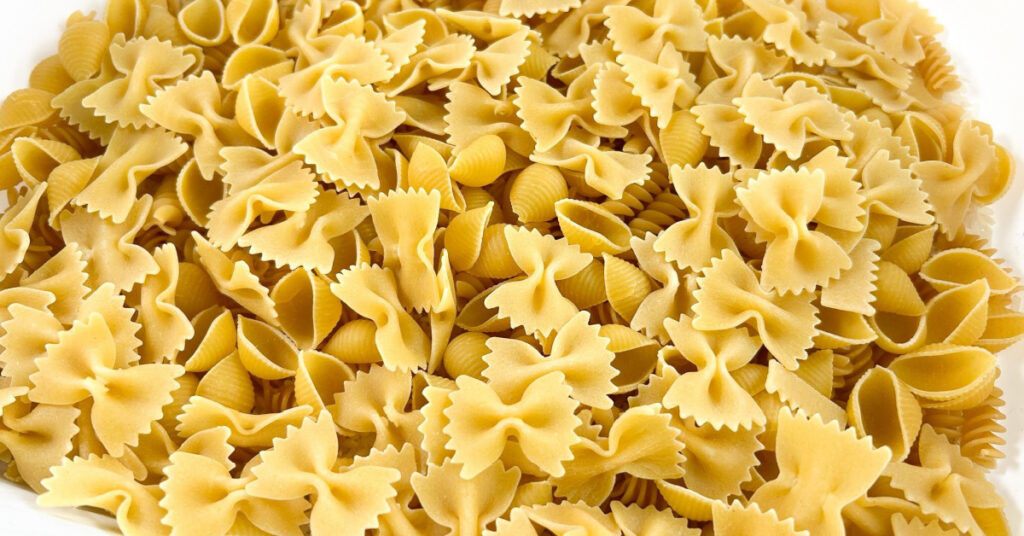
Mix the pasta and rice. Then, place the other objects on top of the pasta – butterflies, caterpillars, leaves, and sticks.
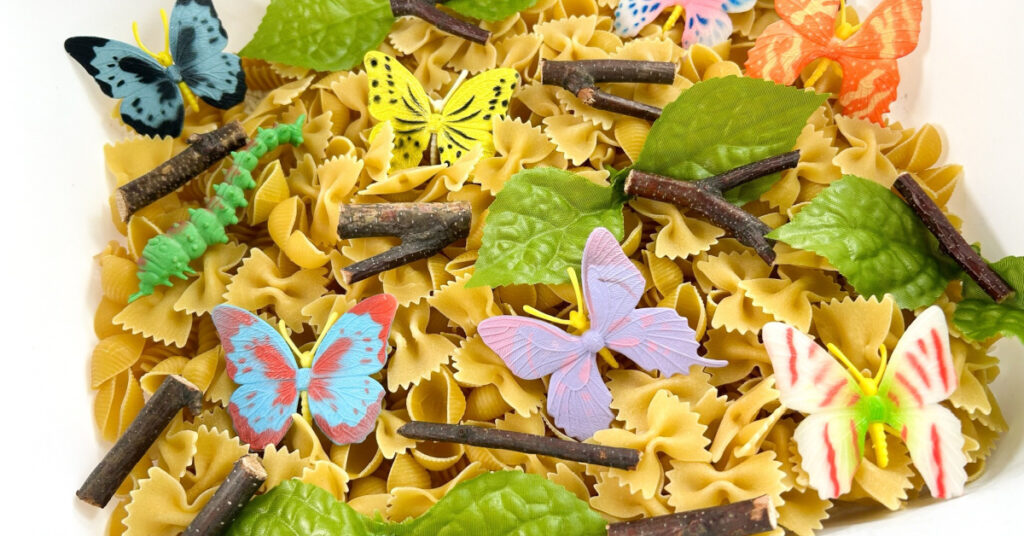
Invite your little ones to dive in and engage with the sensory bin.
Interacting with the Sensory Bin
Using the butterfly life cycle sensory bin offers a variety of fun activities to engage preschoolers and get them excited about metamorphosis.
Begin by having your students sort the materials in the bin, such as leaves, caterpillars, butterflies, and sticks. They can then categorize the items based on their similarities and differences.
You can also challenge your students to create a story by placing the items in order and describing the process of metamorphosis. This storytelling activity encourages creativity and builds literacy skills.
In addition, students can practice counting the objects in the bin to reinforce basic math concepts such as number recognition, one-to-one correspondence, and counting.
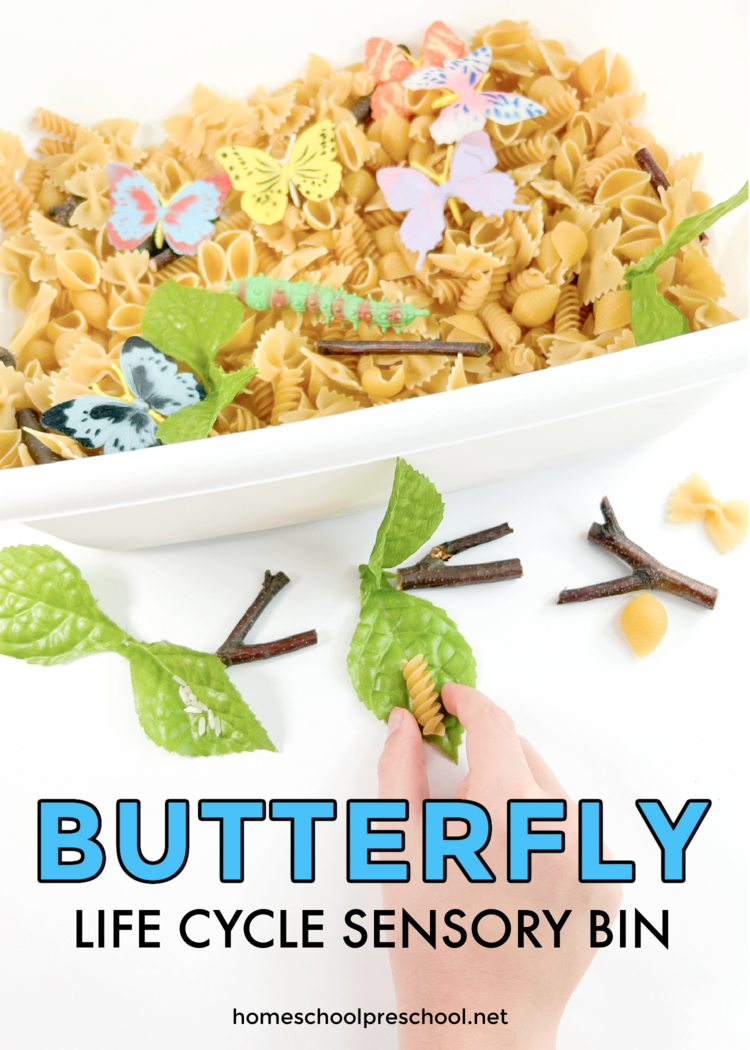
A butterfly life cycle sensory bin is an exciting way to engage preschoolers in scientific learning.
This interactive activity supports their cognitive development while also promoting creativity and problem-solving skills.
With a few simple materials, you can create a unique learning environment that encourages exploration and discovery!
